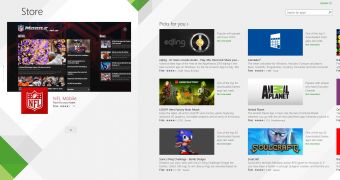Terry Myerson, head of the Microsoft’s Operating Systems division, revealed during the company’s analyst meeting on Thursday that offering a common experience across all devices, be they desktops, tablets, or smartphones, is a priority right now, so a developing team is already working on it.
Myerson explained that users should be provided with the same apps no matter what Microsoft product they are using, which means that the separate app stores could be merged in the future.
Windows 9, the next full stable version of Microsoft’s operating system, was rumored to merge Windows RT and Windows Phone platforms, but no official statements have ever been provided on this.
The next Windows version, on the other hand, could be the first to bring the unified experience that Myerson was talking about, as the company is already working on delivering what he calls a “silicon interface.”
“We really should have one silicon interface for all of our devices. We should have one set of developer APIs on all of our devices. And all of the apps we bring to end users should be available on all of our devices,” Myerson explained.
“Each of our devices require a tailored experience to be really special for the customer, whether that's a three-inch phone, or it's a 9-inch tablet, or a 14-inch clamshell, or a 60-inch television playing Xbox games, we want to facilitate the creation of a common, a familiar experience across all of those devices, but a fundamentally tailored and unique experience for each device.”
Microsoft’s exec also explained that his company was moving “very fast” with this vision, which could indeed be an indication that the app store merger could take place rather sooner than later. Of course, we’re still waiting for an official statement from Redmond, but given the previous speculation on the matter, Windows 9 could bring some pretty important changes for tablet and phone users.
“We had a core team that will bring those silicon interfaces together, bring those developer platforms together, approach delivery of apps to the customers in a common way. We have one team delivering the core services that will light up our devices. And then we have satellite teams each focused on each of the device categories, so each of them can be reflective of what the customer expects in that place,” Myerson concluded.

 14 DAY TRIAL //
14 DAY TRIAL //